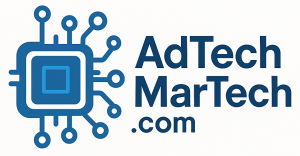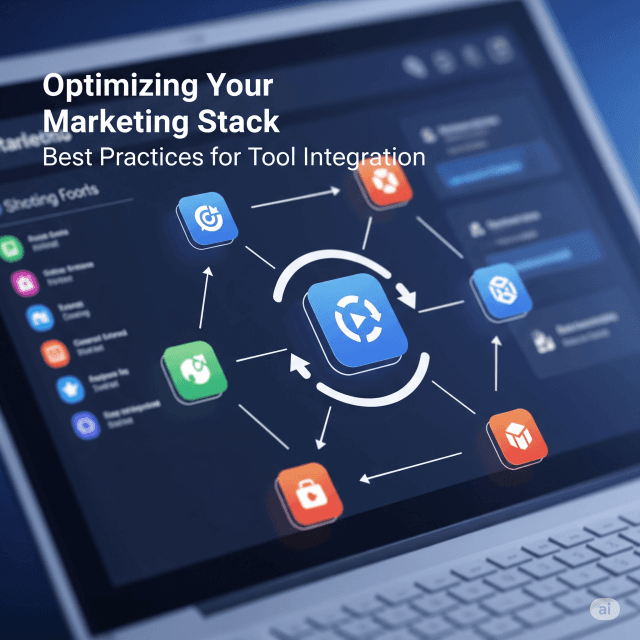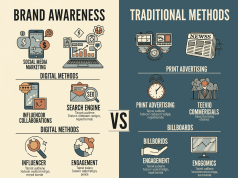In today’s fast-paced digital landscape, businesses rely on an array of marketing tools to engage customers, streamline processes, and measure performance. However, disjointed tools can lead to inefficiencies and data silos. Optimizing your marketing stack through effective tool integration is crucial for achieving seamless operations and maximizing the return on your marketing investment. Below, we explore best practices for integrating your marketing tools.
Understanding Your Marketing Stack
A marketing stack refers to the collection of tools and technologies used to support marketing efforts. This may include:
- Customer Relationship Management (CRM) Systems: Tools like Salesforce or HubSpot that manage customer interactions and data.
- Email Marketing Platforms: Services such as Mailchimp or Constant Contact for email campaigns.
- Social Media Management Tools: Platforms like Hootsuite and Buffer for managing social media presence.
- Analytics Tools: Google Analytics or Tableau for capturing and analyzing performance data.
Why Integration Matters
- Enhanced Data Accuracy: Integration reduces the risk of manual errors when transferring data between tools.
- Streamlined Workflows: An integrated stack allows teams to work more efficiently, reducing duplication of efforts.
- Holistic View of Customer Journeys: A unified system provides insights into customer interactions across multiple channels, enhancing targeting and personalization.
- Improved ROI Tracking: With data flowing seamlessly between tools, it becomes easier to measure the effectiveness of your marketing campaigns.
Best Practices for Tool Integration
1. Define Your Goals
Before diving into integration, clearly define your marketing objectives. Are you aiming to improve customer engagement, enhance lead generation, or maximize retention? Establishing clear goals helps determine which tools will be essential and how they should interact.
2. Choose the Right Tools
Select tools that offer robust integration options. Many modern marketing platforms provide built-in integrations with popular tools, allowing for smoother connections. Evaluate tools based on:
- Compatibility: Ensure they can work together with your existing systems.
- APIs: Look for tools with well-documented APIs for custom integrations.
- User Requirements: Choose devices that your team finds easy to use.
3. Leverage Middleware Platforms
Middleware platforms like Zapier or Integromat (now Make) can bridge gaps between applications that do not natively integrate. These tools allow you to automate workflows, synchronize data, and create custom triggers across different applications without extensive coding.
4. Create a Unified Data Strategy
Centralize your data storage to ensure that all integrated tools pull from a single source of truth. Consider using a data warehouse for analytics purposes, ensuring all tools feed data into it for comprehensive reporting. Regularly audit data quality to maintain accuracy.
5. Train Your Team
Integration will only be effective if team members know how to utilize the interconnected tools. Conduct training sessions to familiarize them with the systems, focusing on how integration improves their workflow and contributes to achieving marketing goals.
6. Monitor and Optimize
Integration is not a one-time task; it requires ongoing monitoring and optimization. Regularly assess how well your tools are working together. Use analytics to identify any bottlenecks or redundancies. Adjust workflows and integrations as necessary to enhance efficiency.
7. Foster Collaboration
Encourage communication between teams that utilize different tools within the marketing stack. Marketing, sales, and customer service departments often have overlapping objectives, so collaboration can enhance the customer experience and streamline lead-handling processes.
8. Stay Agile and Adapt
The digital marketing landscape is constantly evolving, with new technologies and trends emerging regularly. Stay informed about the latest developments and be ready to adapt your tool stack as necessary. Flexibility allows your marketing team to remain competitive and responsive to changes in market dynamics.
Conclusion
Optimizing your marketing stack through effective tool integration is crucial for maximizing efficiency and driving business growth. By following best practices such as defining clear goals, choosing compatible tools, leveraging middleware, and fostering collaboration, you can create a unified marketing ecosystem that enhances data accuracy, improves workflows, and ultimately increases ROI. Embrace the power of integration to transform your marketing efforts into a well-oiled machine.









